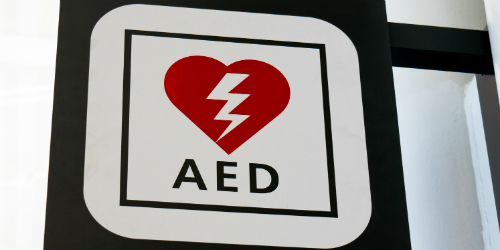- About Us
- Report an Incident
- Safety Management
-
- Aerosol Transmissible Disease
- Bloodborne Pathogens
- Asbestos Program
- Confined Spaces
- Construction Safety
- Control of Hazardous Energy
- County Safety Management Program
- Ergonomics Program
- Fall Protection
- Fleet Safety
- Hazard Communication Program
- Hearing Conservation
- Heat Illness Prevention
- Injury & Illness Prevention Program
- Lead Monitoring Program
- Personal Protective Equipment
- Respirator Protection Program
- Vector Borne Illness
- Forms
- Staff Assignments
- Website Accessibility Assistance
- Back to Safety Planning
Automated External Defibrillator (AED)

Part of the Emergency and First Aid response program, an AED is an electronic device used as a quick response in the event of someone having a sudden cardiac arrest. It administers a mild electrical shock to the heart, and can reverse or arrest abnormal or irregular heart function (arrhythmia). It can provide life-saving resuscitation until qualified medical help arrives.
The advantage of an AED is that it is small and portable, and simple to use in an emergency situation. It can be used by non-medical persons who have been trained in its use. However, it is not a substitute for qualified medical responders who should always be called in an emergency. It is usually administered in conjunction with CPR (Cardio-pulmonary Resuscitation). There is no regulation that requires an AED, but businesses can provide it as part of their First Aid and Emergency Response Program and train employees in its use.
To get more information on if an AED is available in your work area please contact the corresponding departmental Safety Coordinator.
For further information on specific regulatory guidelines please refer to the link(s) below.
AED Fact Sheet (American Heart Association) (PDF: 317 kB)
What is an AED? (National Institutes of Health)